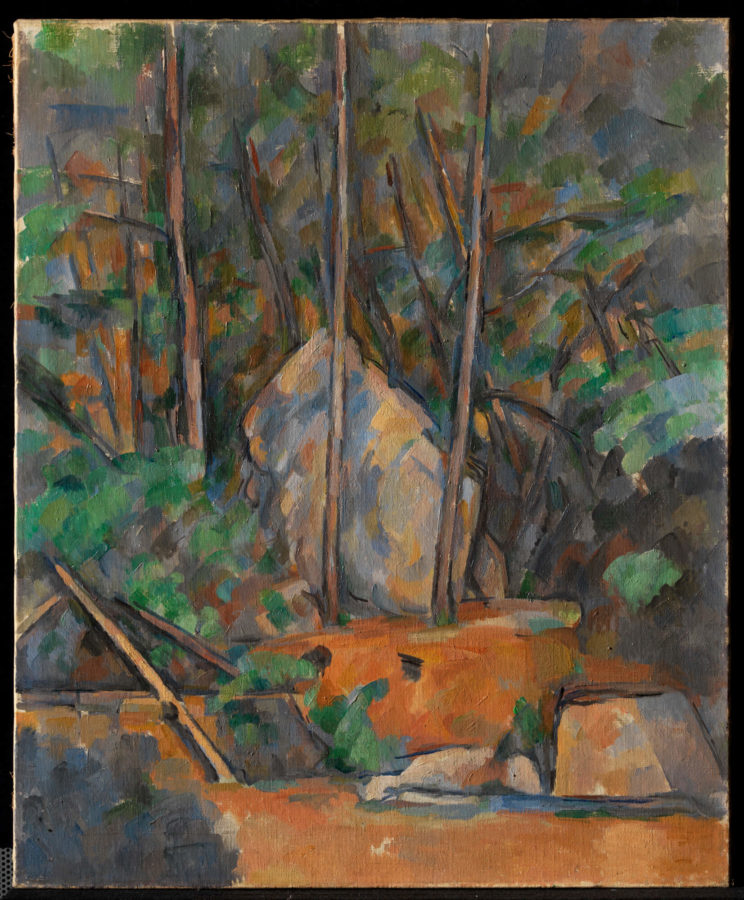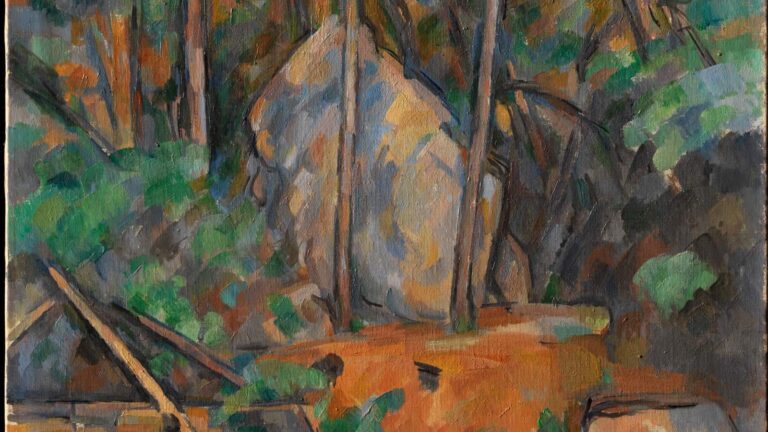Cézanne: The Rock and Quarry Paintings is a new exhibition at the Princeton University Art Museum. Paul Cézanne (1839-1906) is a familiar artist to most of us, but this show is the first to feature an overlooked aspect of his art – his images of rocks and quarries. Cézanne had a lifelong interest in geology, and he painted numerous rocky landscapes throughout his career. By focusing on this subject, the Princeton show helps viewers gain a deeper appreciation for Cézanne’s formal and visual qualities. I really liked this exhibition, and I believe that it will be accessible and enjoyable to visitors, regardless of their knowledge about Cézanne.
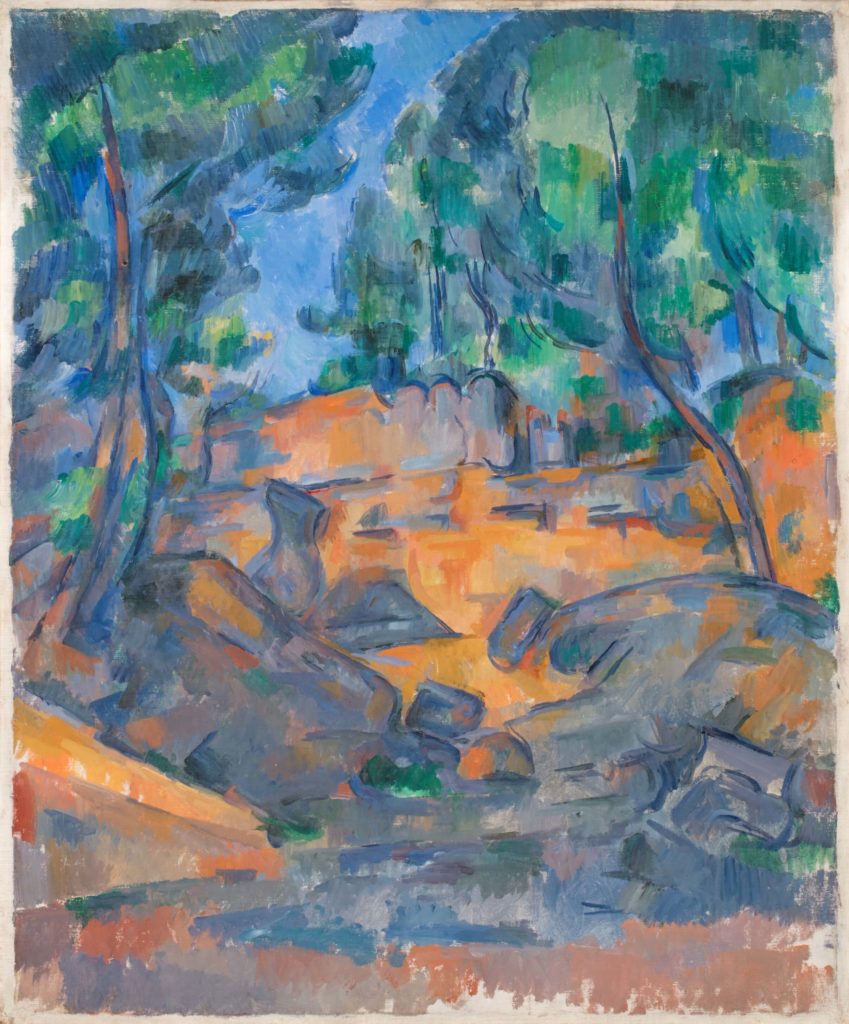
I love small, focused exhibitions, and that’s exactly what Cézanne: The Rock and Quarry Paintings is. It includes about fifteen paintings and a handful of drawings and watercolors, most on loan from various American and European museums. This is a perfect size. I was able to peruse the entire exhibition in detail, read all the labels, and then view each painting once more, all in a reasonable amount of time and without using too much energy. I felt that I could easily take everything in and really appreciate it.
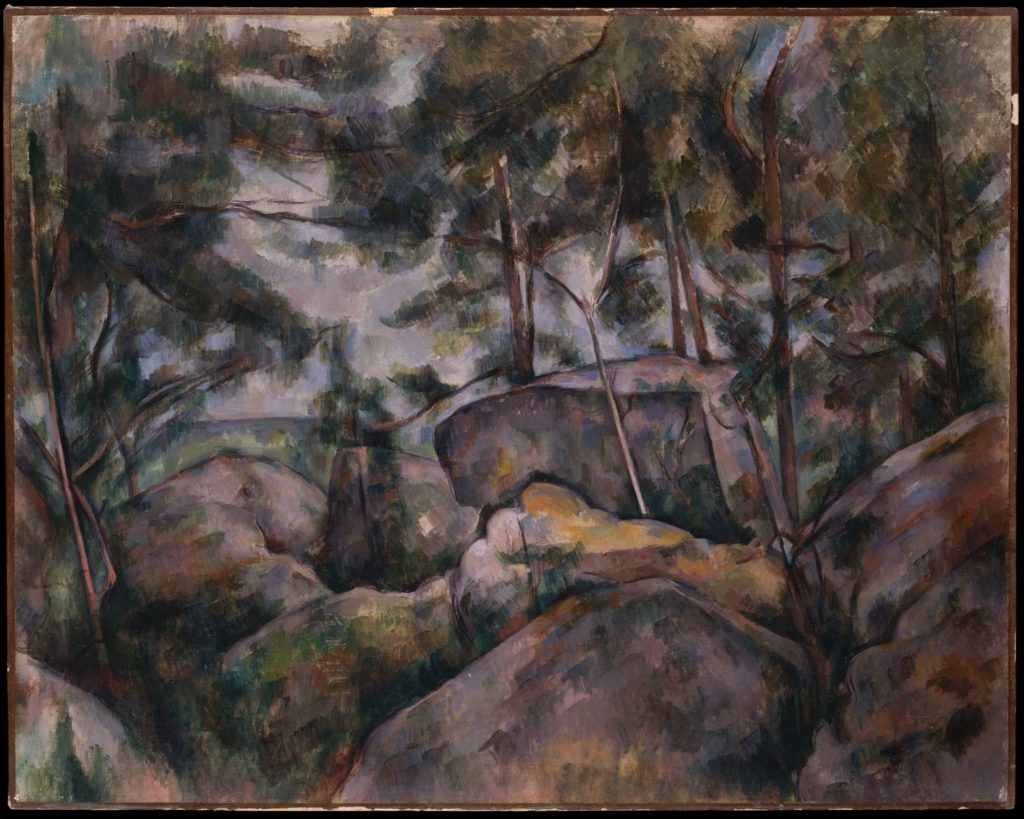
Visual elements dominate Cézanne: The Rock and Quarry Paintings. Biography and interpretation definitely take a back seat in the exhibition. Individual object labels primarily discuss the paintings’ formal qualities. This is nice because it encourages visitors to look at each work closely. Cézanne’s art can require deciphering – for example, it’s not always obvious at first glance what landscape features individual forms represent – so it’s worthwhile to spend some time viewing each composition in detail like this.
Larger wall texts discuss the main locations where Cézanne painted rocks and quarries, including the Bibemus quarry, the forest of Fontainebleau, and the grounds of the Chateau Noir. This is the exhibition’s main organizing principle. Twentieth-century photographs of these sites are really nice additions. The texts explain the chronology of the paintings and Cézanne’s relationships to the various locations. It’s interesting to see how Cézanne could create different moods by painting slightly different views of the same landscape. I also enjoyed seeing some of his watercolor sketches of rocks, which look and feel completely different from the oil paintings.
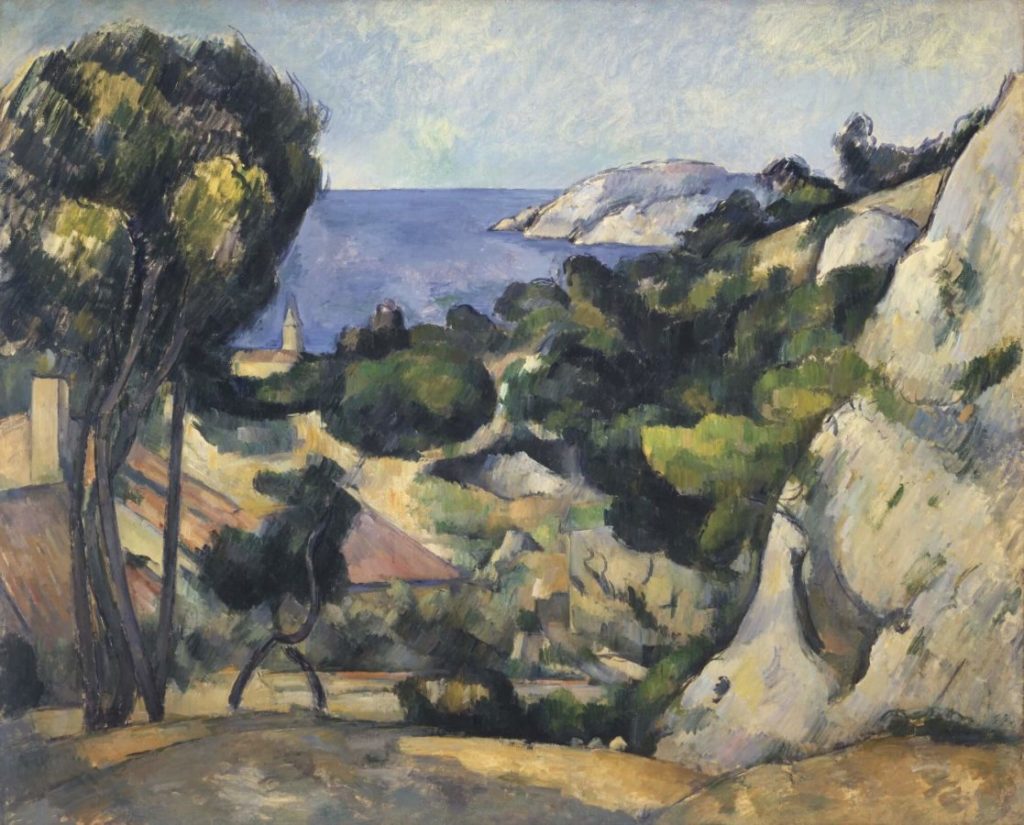
The specificity of Cézanne: The Rock and Quarry Paintings is that it eliminates many of his better-known themes, like card players, bathers, portraits, and still life paintings. However, it does include one of his iconic views of Montagne Sainte-Victoire.
Cézanne: The Rock and Quarry Paintings opened on March 7th at the Princeton University Art Museum in Princeton, New Jersey. It will run there until June 14, 2020; it will then appear at the Royal Academy of Arts in London. The Princeton University Art Museum is open Tuesdays through Sundays and is free of charge. However, the museum is currently closed due to the coronavirus.
